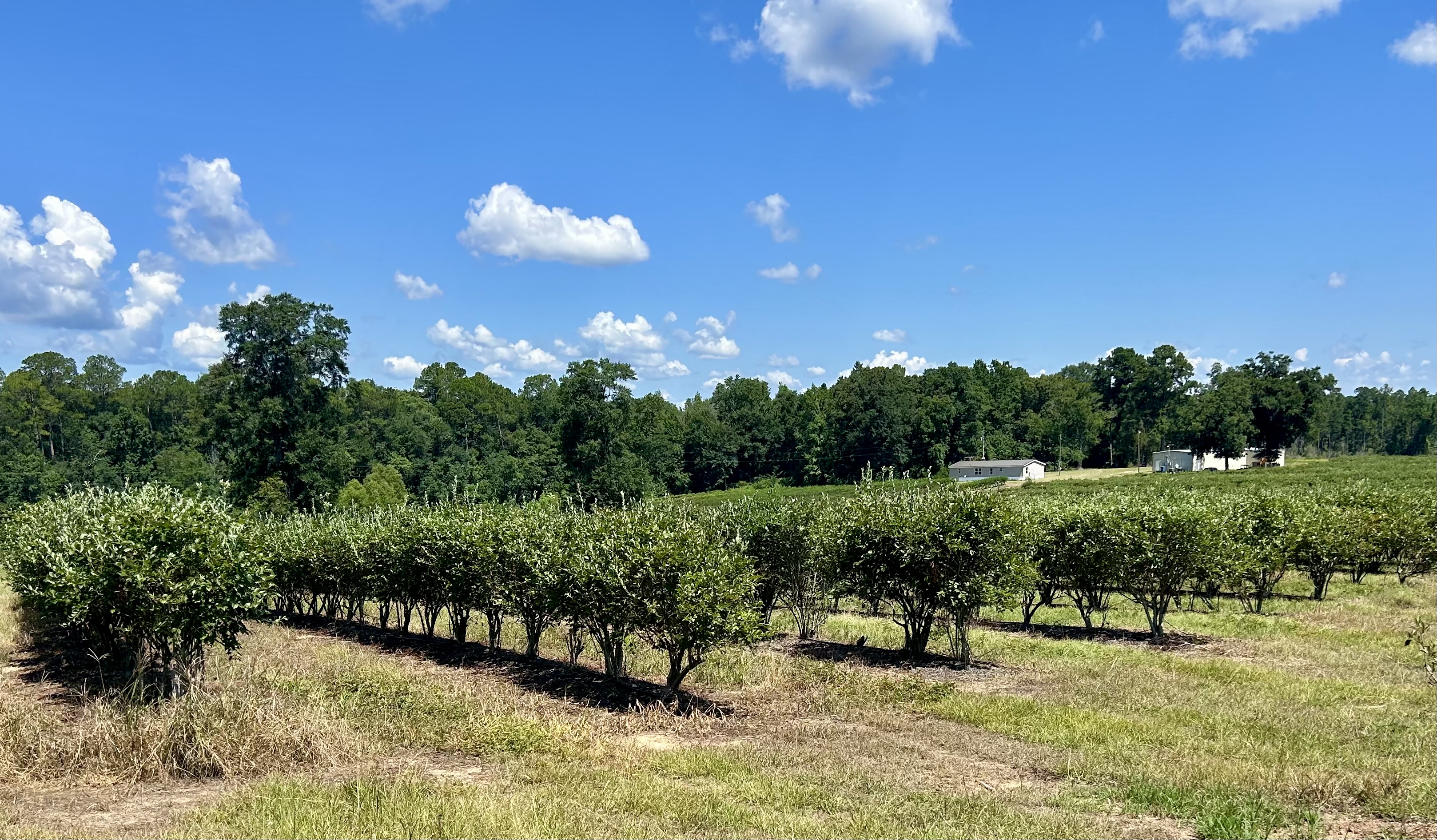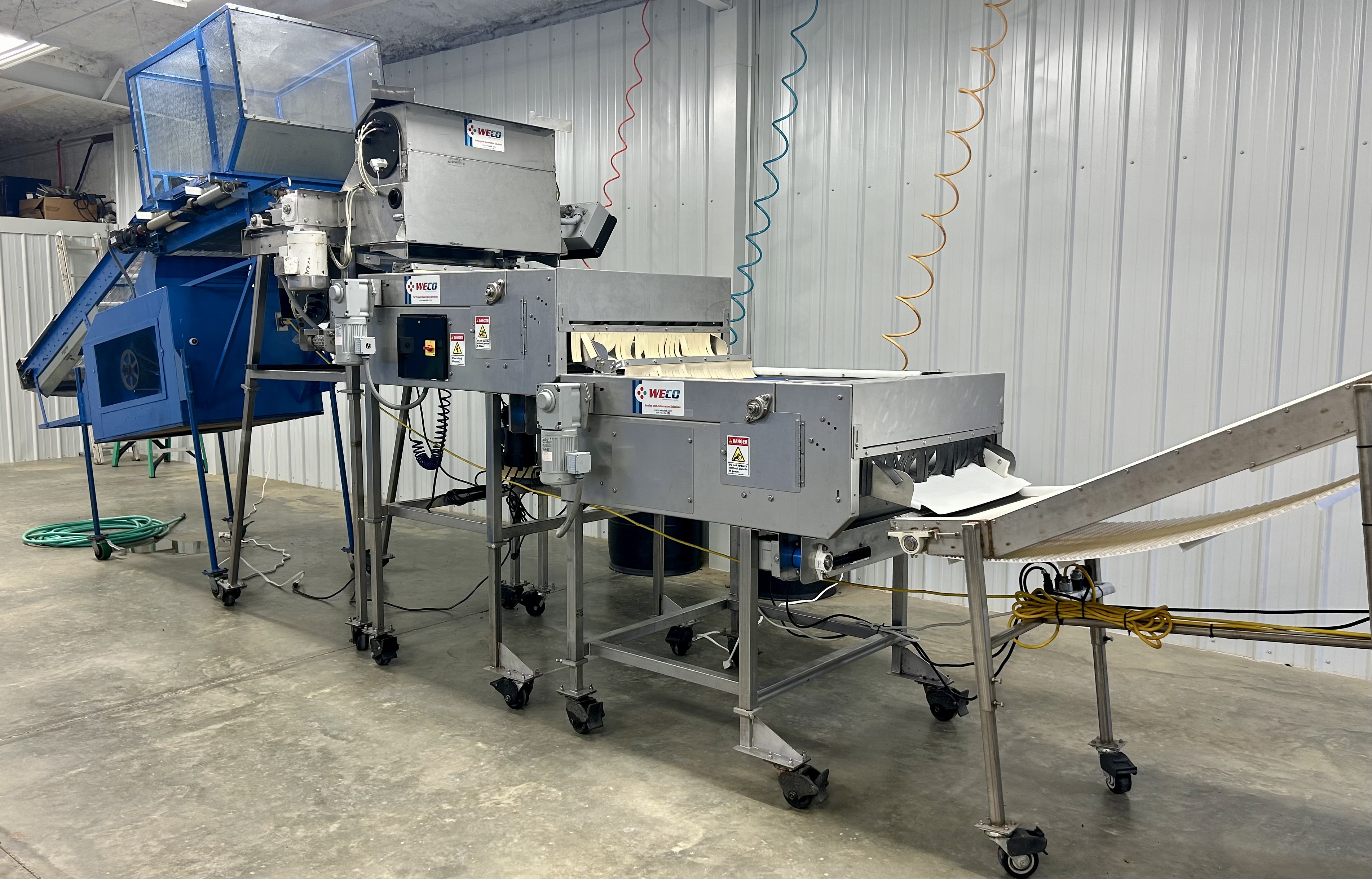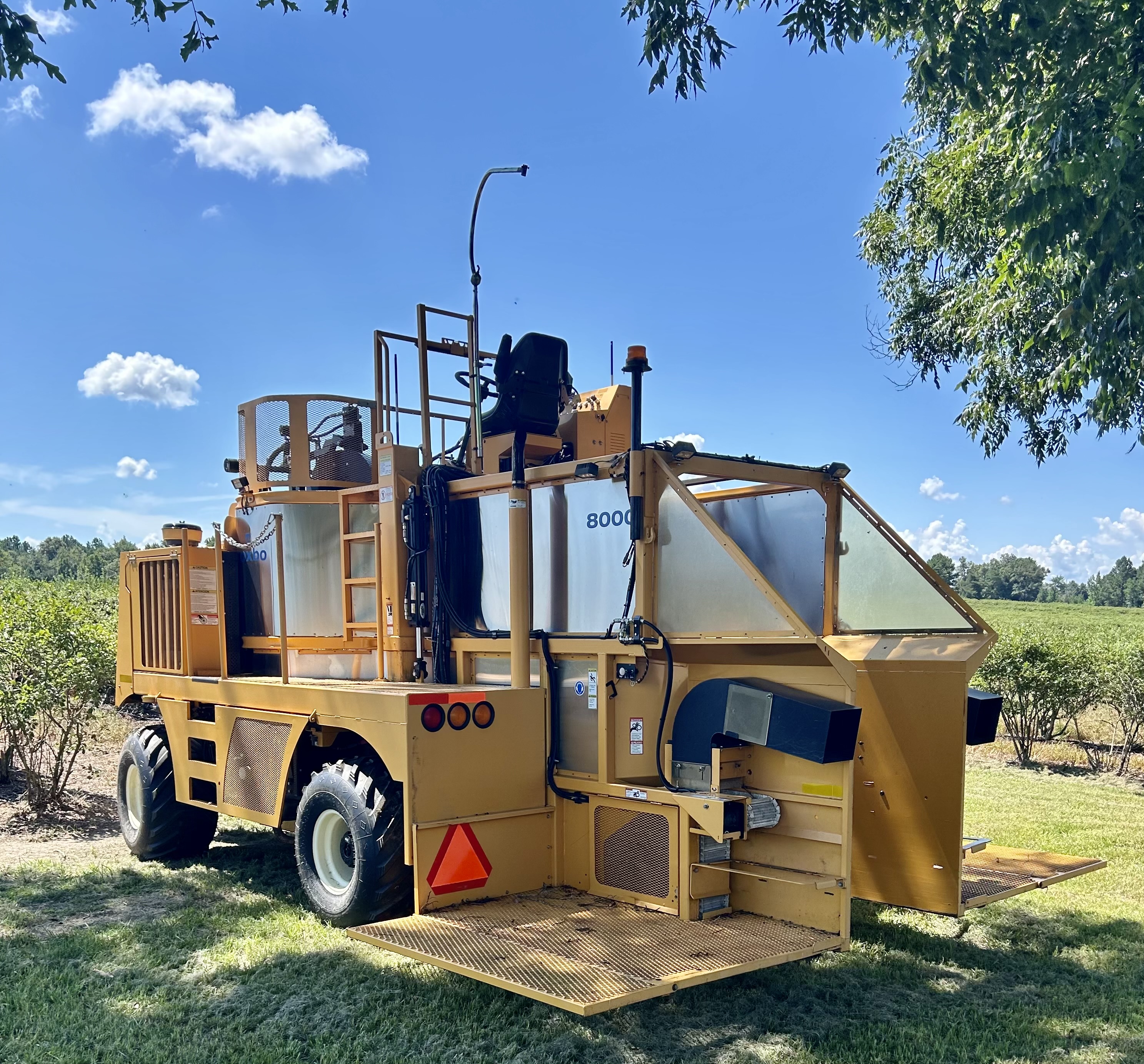Diversification boosts growing blueberry farm

Ferguson Blueberry Farm, established in 2008 on five acres near Chatom in Washington County, continues to grow with now 25 acres and an estimated 20,000 blueberry bushes this year.
The commercial blueberry operation’s success comes from trying different varieties of berries, developing products, and investing in mechanical harvesting equipment. The latest successful experiment is producing blueberry wine to cut down on waste.
Stacy Ferguson, daughter-in-law of the Ferguson Farms owners, said, “We were throwing away about 800 to 1,000 pounds of ripe blueberry fruit each day during harvest season.”
As a local county coordinator for Alabama Cooperative Extension Service, she is excited about the potential of blueberry wine.
“In 2021, we were approved to be a licensed small farm wine manufacturer in Alabama. We are allowed to self-distribute because we have the blueberry farm,” she said. This allowed the Fergusons to reduce their waste and make “lemonade out of lemons,” as the fruit was used in a new way.
The winery side of the business, opened in November 2023, offers and three flavors: blueberry, strawberry, and the “Jimmy D Special”, a blueberry and strawberry mix. New flavors will be added and sold later in the year.
Blueberries start ripening in early May at the Ferguson Farm and picking lasts until July. Blueberries are picked, inspected, packaged, and shipped during these months, according to Jimmy Ferguson, owner/operator, and his wife, Katie, office manager and compliance officer.

As the season ends, the last batches of blueberries are now being shipped and bushes pruned. “It takes about four months out of the year,” Jimmy Ferguson said. This allows a profit to be made without the commitment of year-round attention to the field.
The operation is a family affair. Ferguson, his wife, Katie, his son, Brad, daughter-in-law Stacy, and their children help each year. Granddaughter Diannah picks and sells berries for extra summer money, but hand-picking is a labor-intensive process.
Nearly seven years ago, Ferguson invested in a mechanical picker, which takes three people to operate. This equipment takes the place of an estimated 50 workers that it would take to collect the same amount of blueberries on one day.
“Usually, I pick at night because it's cooler, and the berries tolerate the picking better,” Ferguson said. These late-night pickings are often done because of better conditions but, in some cases, choosing a convenient time is just not an option.
One variety of berries produced at the farm is the “Climax” variety, if this variety is ripe, rain will burst the berries. When the forecast calls for rain, he must rush to get on the picker and will be out as late as 1 a.m. to harvest and save the berries.

After blueberries are picked, they go inside a processing building to be prepared for packaging. Berries are placed on a conveyor belt where they are separated by cameras that check for debris, disformities/spots on the berries, and ripeness.
The blueberries are graded to make sure they are of high quality, and then they are sent to packaging and shipped to customers weekly.
Through the Wayne County Blueberry Association, Ferguson is provided with a broker who coordinates where berries need to be shipped based on demand. These berries are then shipped to places such as Pennsylvania, Texas, Florida, Mississippi, and various places within Alabama.
All the improvements at Ferguson Farm have made the farm more efficient with only eight workers required. Machines are cleaned daily due to the strict procedures with which the farm must comply.
The farm grows three different varieties of blueberry bushes. These varieties can produce various sizes, textures, and tolerance to environmental factors. Key Crisp is a more popular variety, proving to be a big hit in Texas.

The Ferguson farm works closely with Auburn University to experiment with new varieties.
With spring frost often a problem for blueberry farmers, Sushan Ru, assistant professor of Small Fruit Breeding and Genetics in the AU Department of Horticulture, explained how they are attempting to introduce frost-tolerant cultivars.
High Chill Southern Highbush, a bush with larger resistance to frost, is being used to combat frost. These bushes increase the yield produced from the bushes following a frost. Although these bushes are not at max production now, they will soon be producing more.
Other issues with blueberry farming include pests such as birds, deer, and worms eating the berries.
The Fergusons, bonded by their work with blueberries, believe they have hit the sweet spot for establishing what they see as an ever-evolving family legacy.
Tags: Chatom